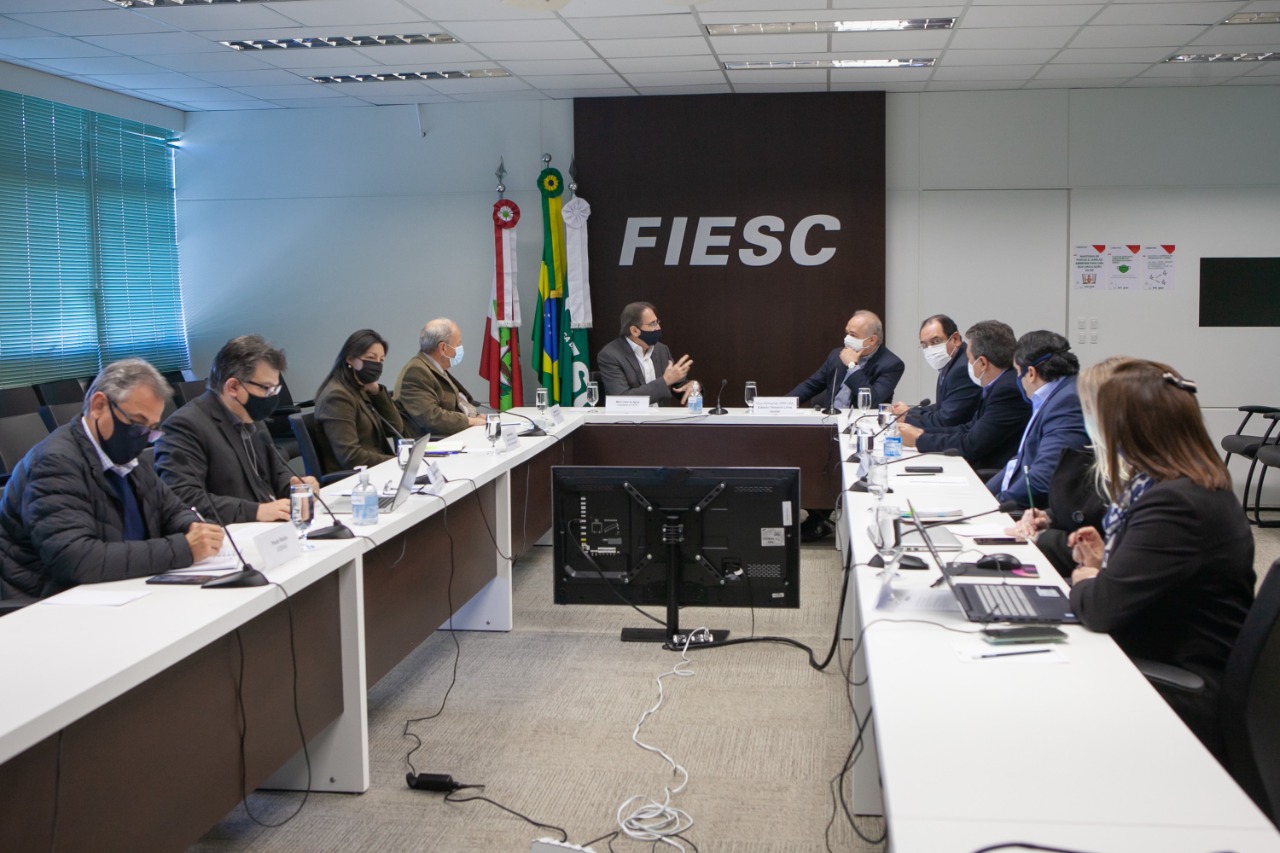InvestSC: meeting about the recovery of naval construction industry is held in Santa Catarina

The President-Director of Emgepron (Empresa Gerencial de Projetos Navais, in English, Naval Projects Management Company), vice admiral Edesio Teixeira Lima Junior, was in Florianopolis to discuss the progress of the construction project of four military vessels in Santa Catarina, which has an investment of R$ 9,1 billion, and may create up to 2 thousand direct jobs and near 8 thousand related jobs. State Government representatives, InvestSC, FIESC, SEBRAE and SENAI all participated in the meeting at the Santa Catarina’s Industry federation’s (FIESC) head office.
The vessels’ project, with high-end technology, will take part at Oceana Shipyard, in Itajaí. The ships will be used in the protection of the Brazilian coast, in search and rescue missions, and in the fulfilment of international commitments.
“This is the largest structuring project currently underway in the State, and will boost not only the naval construction industry, but all of sea economy”, claimed executive secretary of International Affairs (SAI), Daniella Abreu.
At FIESC, the vice admiral Edesio Lima presented the cluster model installed in Rio de Janeiro, which Emgepron is one of the founder companies, highlighting the importance of sea economy as a strategic focus for the State’s development. “The alignment between the government, private sector and the academy (universities) is key to the cluster’s success, besides the benefits for society, with more jobs, tax collection and quality of life.
The contract between Brazil’s Navy and Águas Azuis consortium goes until 2028, with the first frigate being expected to be delivered in 2024. The consortium is formed by Brazilian and German companies – Thyssenkrupp Marine System, Atech and Embraer Defesa e Segurança.
According to data from the OECD, sea economy will have an added value of around 3 trillion and more than 40 million direct jobs until 2030. Currently, 90% of foreign trade is by sea and it is estimated that maritime cargo traffic will triple by 2050.
Source: FIESC
